Project Condor: death from heaven
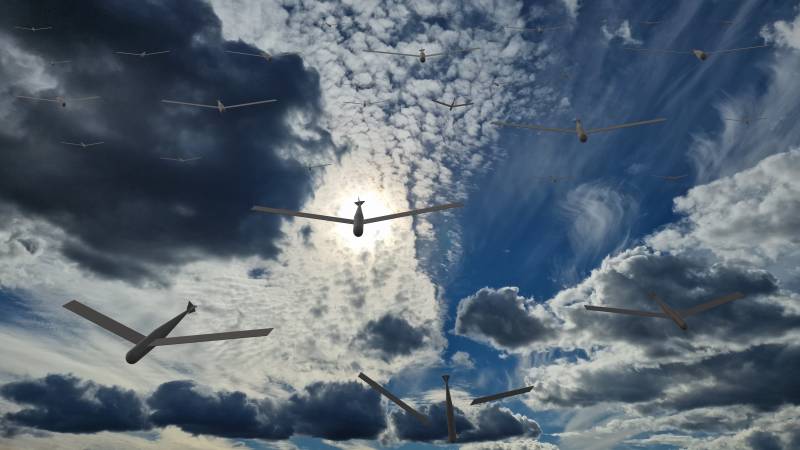
As we said earlier in the article "The problem of the high cost of precision-guided munitions and ways to solve it", the Russian special operation in Ukraine revealed the highest need for the armed forces of the Russian Federation (RF Armed Forces) in high-precision weapons. The problem is its high cost, limited volumes and long production cycles.
By creating special kits, a number of unguided munitions can be converted into high-precision ones, for example, such measures can be implemented in relation to free-falling bombs, artillery shells, unguided aviation rockets (NAR) and shells of multiple launch rocket systems (MLRS). Such samples, although inferior to products originally manufactured as high-precision ones, are much cheaper for the armed forces and can potentially be manufactured in larger quantities.
But, as world experience shows, on the basis of unguided products it is possible to create only high-precision weapons of limited range, of the order of fifty and a maximum of one hundred kilometers, and in the face of active opposition from the enemy, whose armed forces are equipped with modern anti-aircraft missile systems (3RK), as well as counter-battery systems combat and high-precision weapons of comparable range (50-100 km), there is a need to saturate the armed forces with inexpensive high-precision weapons, the flight range of which allows them to be used outside the reach of air defense systems and enemy counter-battery weapons.
Let's designate the project of a promising long-range guided gliding munition (UPB-BD) as "Condor".

The Andean condor can soar in the air for hours without moving its wings. Image by wikipedia.org
Guidance and control system
First of all, the UPB-BD "Condor" must be equipped with the most inexpensive guidance equipment, which is guidance using the signals of the global navigation satellite system (GLONASS).

The creation of an independent global navigation satellite system has become one of the most important achievements of the Russian Federation. Image by wikipedia.org
Wouldn't such a high-precision weapon be able to hit moving targets? Yes, but much more expensive cruise and ballistic missiles of the Kalibr and Iskander types do not have such an opportunity.
Can GLONASS signals be jammed by means of electronic warfare (EW)? It is possible, but most likely, only in a very limited area, at least in Ukraine, we cannot “turn off” the American GPS satellite navigation system, the armed forces of Ukraine (AFU) use GPS-guided weapons without any problems.
Will the enemy disable GLONASS satellites? But it will be a completely different war. In this case, we will also disable GPS satellites, and the big question is who will be worse (it will be worse for the United States and its allies, since they are much more tied to high-tech weapons than the RF Armed Forces).
In general, for a huge number of local conflicts, which include the special operation in Ukraine, GLONASS guidance on precision-guided Condor-type munitions is quite enough. And, in fact, there is no alternative to satellite guidance for inexpensive solutions, all other options are either much more expensive or not applicable to long-range precision weapons.
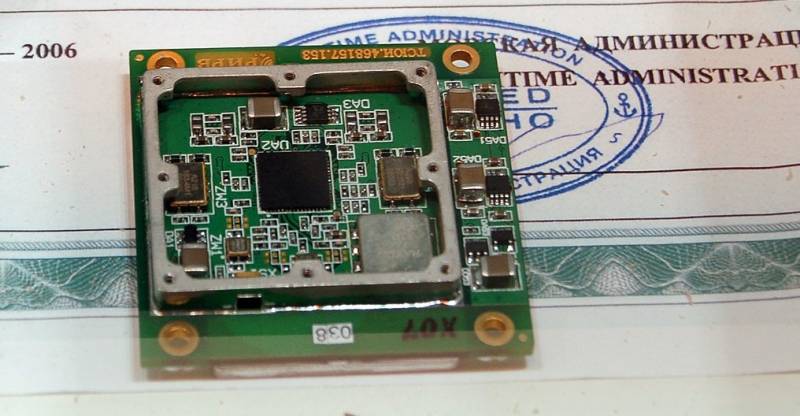
Receiving module GLONASS/GPS 1K-181. Image by wikipedia.org
The guidance and power control system will be powered by lithium-manganese dioxide (Li-MnO2) or lithium-thionyl chloride (Li-SOCl2) batteries, which have a long service life and resistance to low temperatures.
Engine
With the engine, everything is simple - at the UPB-BD "Condor" we will completely abandon it. A turbojet engine (TRD) is very expensive. We either don’t have inexpensive, highly economical small-sized aircraft engines, both gasoline and electric, or there are very few of them, even for reusable UAVs. Spending them on disposable ammo is just wasteful.
How do we then get a range of hundreds of kilometers?
Chassis
The key to obtaining long range in the Condor project is the use of a glide body with a high level of aerodynamic sophistication and a carrier that provides adequate glide range and mass release of glide ammunition.
The planning range is determined by the aerodynamic quality of the aircraft. With an aerodynamic quality equal to 30, an aircraft, planning from a height of 1 kilometer, will fly 30 kilometers horizontally. For example, the American U-2 strategic reconnaissance aircraft has an aerodynamic quality of 28 units, the Soviet Myasishchev M-17 and M-55 aircraft have approximately 30 units, and the German Schleicher ASH-25 glider has as many as 60 units.
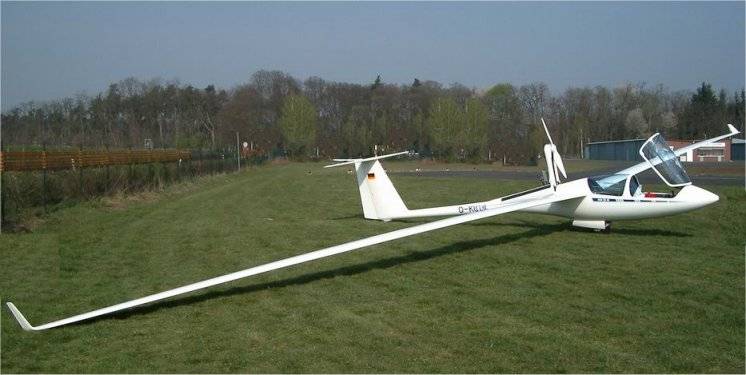
Schleicher ASH-25 glider. Image by wikipedia.org
The lift-to-drag ratio shows the glide distance without taking into account the influence of the wind. It can be assumed that in order to obtain a flight range of a gliding munition of the order of 100-200 kilometers when dropped from a height of about ten kilometers, its body must have an aerodynamic quality of at least 30 units.
Presumably, the body of the promising UPB-BD "Kondor", in fact, structurally closer to the kamikaze UAV than to an air bomb, will be a high-wing aircraft with a large elongation wing. The need to transport a large number of UPB-BD "Kondor" will most likely lead to the implementation in its design of drop-down wings, but rather, a rotary monowing that unfolds after the ammunition is dropped.
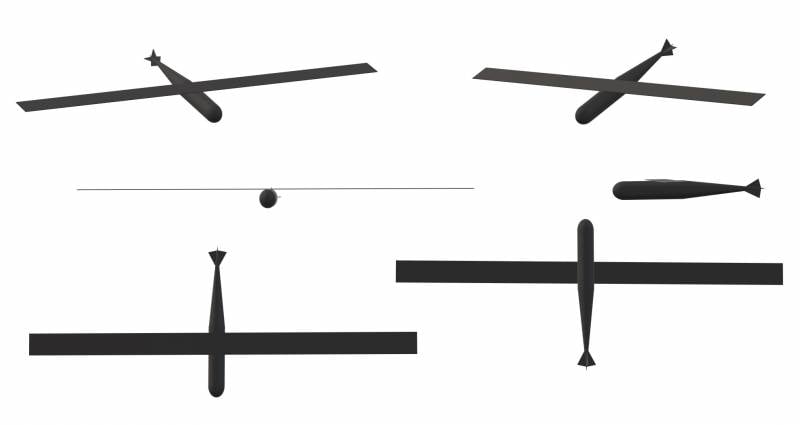
The concept of UPB-BD "Condor" with a straight rotary wing of high elongation. Image made by the author
The need to minimize the mass and labor intensity of manufacturing UPB-BD "Kondor" involves the use of polymer or composite materials, while the latter usually have a higher cost, but also greater bending strength, a better weight / strength ratio.
This is what the manufacture of a composite body on a radial weaving machine might look like.
Presumably, the optimal solution for the manufacture of plastic skin for the hull and wing of the UPB-BD "Condor" will be the use of injection molding machines and extrusion machines capable of blowing polymer products of complex shape in large quantities. The resulting blanks after minimal machining will go to the assembly site.
It is unlikely that it will be possible to achieve the necessary structural strength only due to the supporting body. Most likely, both the hull and the wing will require an internal frame. The best solution would be to get such a frame in the same way as the hulls and wings - something like spars and / or a honeycomb structure of complex shape. If the plastic does not provide the necessary rigidity, then the solution may be the creation of an aluminum frame, and to reduce the cost, its production can be carried out from industrial solutions (corners, profiles) used in the civilian market.

An injection molding machine (top, left), an extrusion machine (right), and an extruded aluminum profile (bottom, left). Image by wikipedia.org
It must be understood that the UPB-BD "Kondor" is not intended for use from tactical aircraft, this class of weapons requires a specific carrier, which we will discuss below.
Warhead
Of course, in the UPB-BD "Condor" it will not be possible to install a warhead comparable to those that are placed in long-range cruise and ballistic missiles, that is, about 300-500 kilograms. However, as practice shows, high-precision weapons perfectly manage with warheads of a much smaller mass, compensating for the power of the explosion with the accuracy of the hit.
It can be assumed that the mass of the warhead of the UPB-BD "Kondor" should be about 10-50 kilograms, which is approximately in the range of masses of the warhead of a 122-mm Grad MLRS projectile and a fragmentation projectile of 152 mm caliber. Potentially, several sizes of UPB-BD "Condor" can be created, for example, with warheads weighing 10 kilograms, 20 kilograms, 50 kilograms, and so on.
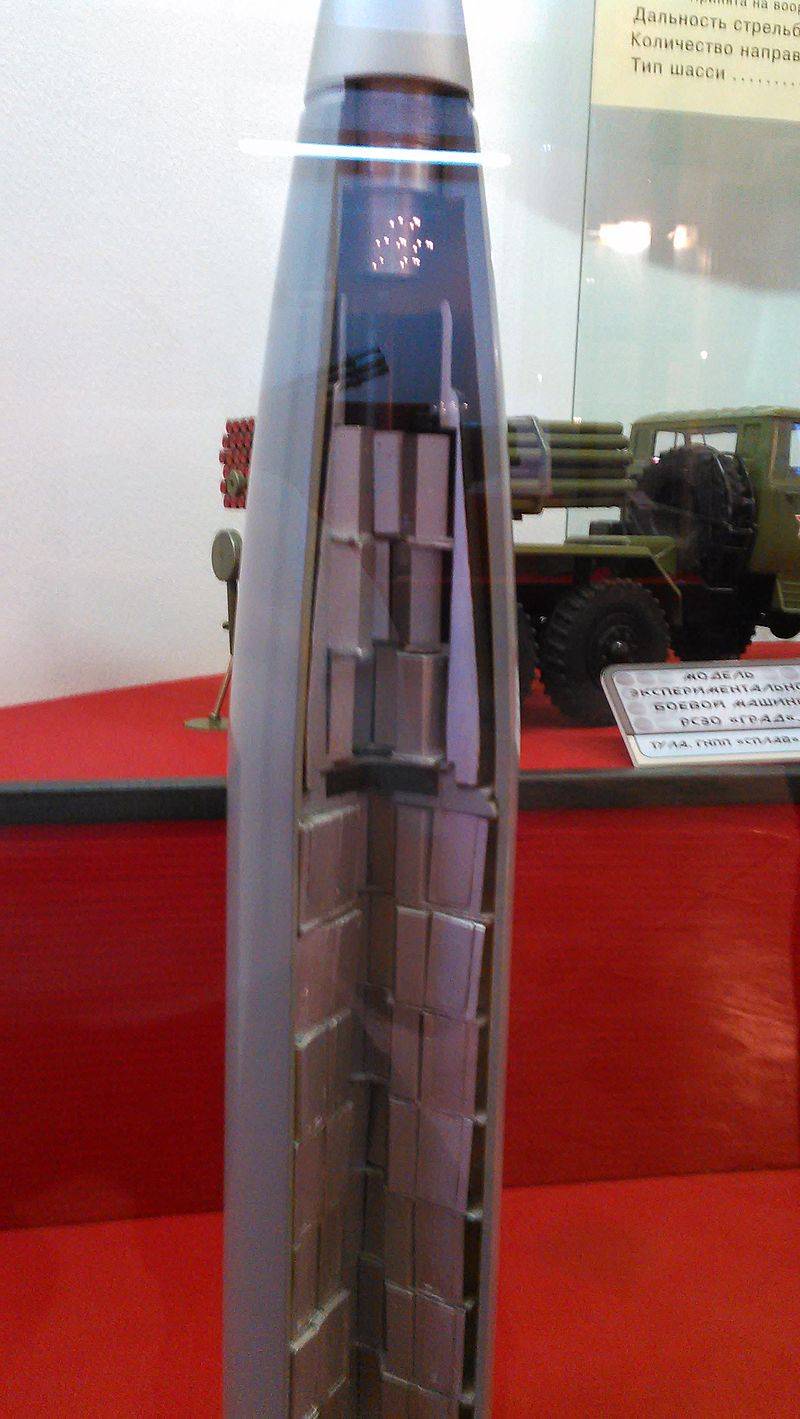
Model of the incendiary warhead 9N510 of the 122 mm caliber projectile for the Grad MLRS. Image by wikipedia.org
Transport and launch container (TPK)
Due to the specific shape of the Condor UPB-BD, it is not rational to use standard cylindrical or rectangular TPKs for its storage, since in this case most of the container will “carry air”.
Presumably, it is better to use not a sealed TPK, but something like an external frame TPK exoskeleton, to which the Condor UPB-BD will be attached during transportation, in order to prevent damage, especially to long and thin wings. In it, it must be dropped from the carrier.

The concept of the UPB-BD "Condor" with a folded (turned along the body) wing in a frame-type TPK. Image made by the author
After the drop, a small parachute opens in the tail section of the TPK, stabilizing it in a position close to vertical. Then the locks are opened, after which the UPB-BD "Condor" falls out of the TPK under the influence of gravity and heads towards its target.
Transportation of UPB-BD "Condor" in TPK-exoskeletons should be carried out in group sealed containers, in rows, on racks.
If practice shows the need for a full-fledged sealed TPK, then, presumably, it can be made of plastic with internal stiffeners or fiberglass winding and will have a square or trapezoidal section.
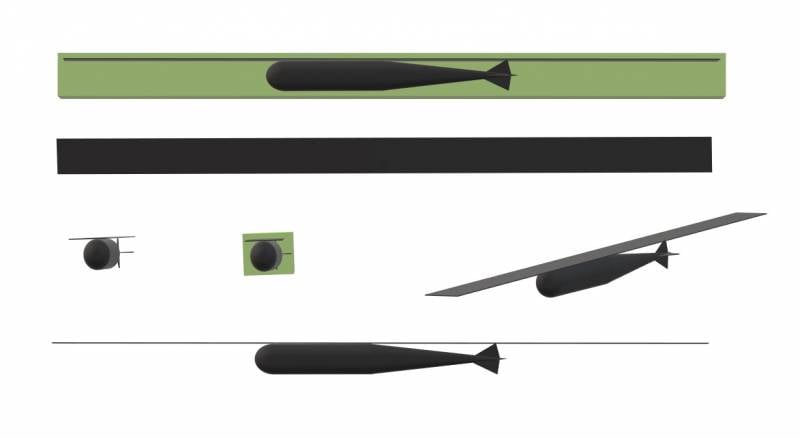
The concept of the UPB-BD "Condor" with a folded (turned along the body) wing in a sealed TPK. Image made by the author
Weight and size characteristics
What should be the weight and dimensions of the UPB-BD "Condor" for the delivery of warheads weighing 10-50 kilograms?
The maximum mass of the aforementioned German glider Schleicher ASH-25 is 750 kilograms, empty - 478 kilograms, that is, 272 kilograms of payload - this is more than a third of the maximum weight. The ASH-25 is almost nine meters long and has a wingspan of almost twenty-six meters.
For a payload, that is, a warhead weighing 50 kilograms, the maximum mass of the Condor UPB-BD will be about 150–200 kilograms. Proportionately reducing the dimensions, we get a hull length of about two meters with a wingspan of about five meters.
Thus, in the transport and launch container, the UPB-BD "Condor" will have dimensions of 6x0,5x0,5 meters, that is, somewhere at the level of the dimensions of a "real" cruise missile, only it will weigh an order of magnitude less. With a reduction in the mass of the warhead, for example, to 10-20 kilograms, the maximum mass of the UPB-BD "Condor" will be less than 100 kilograms, and the dimensions in the TPK will be reduced to approximately 3x0,25x0,25 meters.
In reality, the mass and dimensions of the UPB-BD "Kondor" may be larger, since the relationship with a change in the mass / dimension of the airframe may be indirect, but by varying the mass of the warhead in the range from 10 to 50 kilograms, as well as the dimensions of the airframe, it is highly likely that to a minimum (weight about 100 kg, dimensions in TPK 3x0,25x0,25 meters) and maximum (weight about 200 kg, dimensions 6x0,5x0,5 meters).
There is a possibility that it will be difficult and expensive to implement folding wings / monowing - there will be failures at the drop and deployment stage. Then a more appropriate solution would be to use a fixed wing - in the warhead mass range of 10–20 kilograms, and with a total width of the wing / wings of about three meters, this is quite acceptable. In this case, TPK as such is not required at all. The UPB-BD "Kondor" will be placed sequentially with a slight offset in special cassettes that will occupy an entire "floor" in the carrier's weapons compartment.
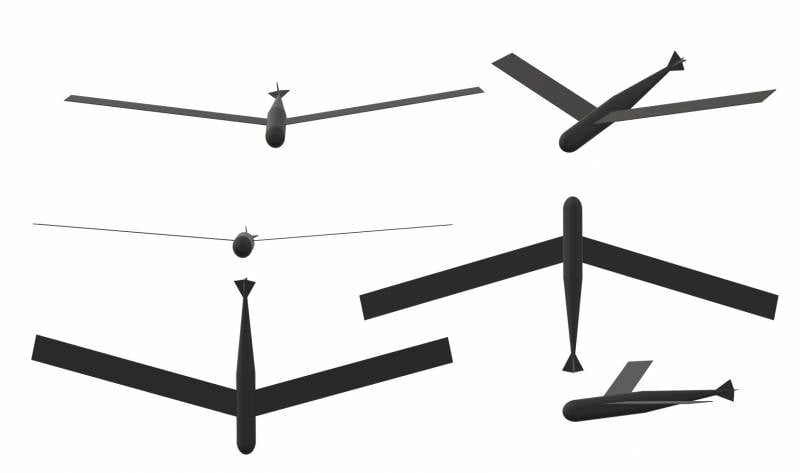
The concept of UPB-BD "Condor" with a clumsy wing. Image made by the author
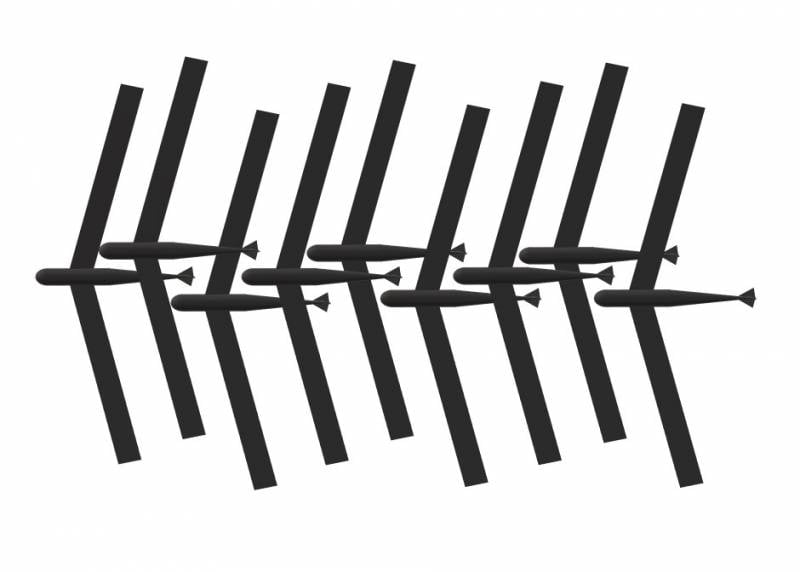
Depending on the final shape of the hull and dimensions, various options for increasing the density of the UPB-BD "Kondor" in the Il-76B weapons compartment can be considered. Image made by the author
It remains to choose the appropriate carrier for the UPB-BD "Condor".
Carrier
The specifics of the UPB-BD "Condor" excludes the use of tactical aircraft for its release - this product is not intended for high overloads and, most likely, it cannot be placed on an external sling. Yes, and it makes no sense - too little UPB-BD "Condor" will raise the same Su-34 / Su-35S, and the cost of an hour of its flight will largely "zero" measures to reduce the cost of the ammunition itself.
The same applies to missile-carrying bombers - it is impossible to carry on an external sling, it makes no sense to adapt the UPB-BD "Condor" to the internal compartments. We have few missile bombers, let them deliver more serious weapons.
It can be assumed that the best option for dropping the UPB-BD "Condor" will be modified Il-76 transport aircraft, we will conditionally designate them as Il-76B.
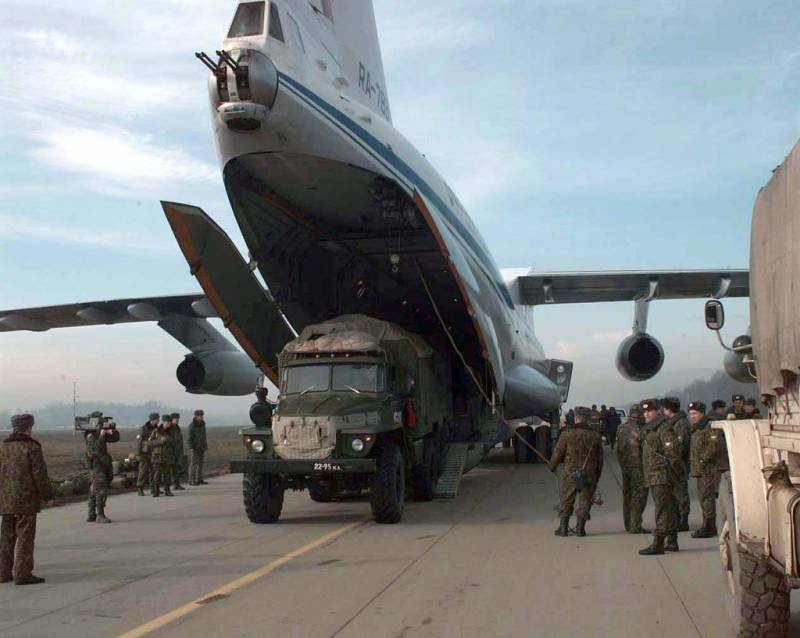
Il-76 aircraft have an impressive cargo compartment. Image by wikipedia.org
Of course, transport aircraft of the Il-76 type of the RF Armed Forces are always in short supply, as well as vehicles based on them - tankers and AWACS aircraft. However, at present, new production lines seem to have been installed, on which it is planned to increase the annual production of IL-76 of various modifications to 12 units per year. Thus, it is quite realistic to allocate two to four aircraft for conversion into UPB-BD "Condor" carriers, and if the complex proves itself positively, then eight to twelve aircraft.
What re-equipment of the IL-76 will be required?
The Il-76 transport aircraft has a cargo compartment with dimensions of 20x3,45x3,4 meters (in general, the length of the cargo compartment is 24,5 meters, but from it there is a 4,5 meter ramp), a load capacity of 28–60 tons, a flight range with a payload of 40 tons - 6 500 kilometers. The entire space of the cargo compartment, also known as the weapons compartment, will be occupied by a storage and discharge system, which is a multi-tiered rack with pusher conveyors placed in parallel.
With the dimensions of the TPK 6x0,5x0,5 meters, the converted cargo compartment of the Il-76B will fit 108 UPB-BD "Condor" (six in a row, six in height, three in depth). At the same time, the mass of all 108 UPB-BD "Condor" will be about twenty tons. Even if the mass of equipment for the release and storage of the UAV is the same, it will still be almost a third less than the maximum carrying capacity of the original Il-76.
Reducing the mass and dimensions will lead to a corresponding increase in the number of UPB-BD "Kondor" placed on board the modified IL-76B (non-linearly, since the mass of the storage and discharge system will increase simultaneously due to the larger number of racks).
For a variant with a clumsy wing about three meters wide, with a cassette placement in the Il-76B, approximately 60-120 Condor UPB-BDs will fit, depending on their final dimensions and layout method in the compartment.

This is how the UPB-BD Condor variant with a clumsy wing can be placed, only the rack will be oriented vertically, and the ammunition in it will also be located sequentially. Image by wikipedia.org
The release speed of the UPB-BD "Kondor" will be determined only by restrictions due to the possibility of their collision in the air at the initial stage of the flight. For example, when resetting the UPB-BD "Condor" with an interval of 1-3 seconds, it will take about 2-7 minutes to fully eject the ammunition load.
The transportation and release of ammunition from transport aircraft has been worked out for a long time by various enterprises in various countries of the world.
Presentation of the cruise missile launch system from the Rapid Dragon transport aircraft from Lockheed Martin
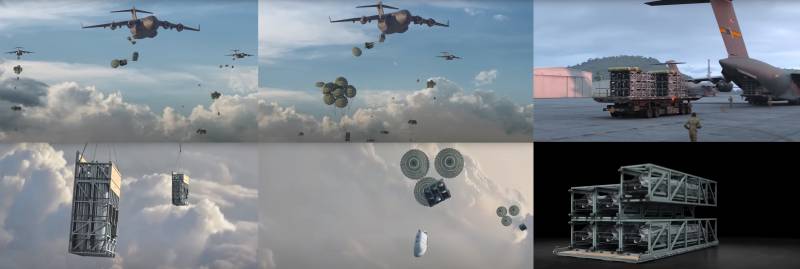
This option is quite applicable to the launch of the UPB-BD "Condor". Image from Lockheed Martin presentation
The target coordinates can be programmed using the Zigbee wireless industrial protocol right inside the weapons compartment, and the electronics will be activated after the contacts are mechanically closed when the Il-76B is installed in the weapons compartment.
Price issue
When creating the UPB-BD "Condor", it is necessary to be guided by the minimization of cost and the maximum use of civil and industrial components. This will require the RF Armed Forces to make decisions about what they are willing to sacrifice in order to be able to deliver massive strikes against the enemy at the lowest possible cost. What can you refuse? For example, from storage at low temperatures - yes, UPB-BD "Condor" will have to be stored at temperatures down to -20, or even -10 degrees Celsius. You can refuse resistance to the damaging factors of a nuclear explosion - this is a weapon of local conflicts, from overloads, excessive vibrations and much more.
What do we get in return?
The use of civilian/industrial components will potentially reduce the cost of the Condor UPB-BD to the level of 3–000 US dollars at the current exchange rate. This is an expert assessment based on the cost of civilian UAVs, electronics, information about the possibility and cost of manufacturing polymer products by extrusion, and other factors.
For example, we can consider the use of middle-class smartphones in the design of the Condor UPB-BD - a modern smartphone, even a middle class, is several times more powerful than the on-board computer of the Curiosity rover or the F-22 fighter. Hidden purchase of half a million to a million smartphones at a wholesale price of $ 300 apiece, in some Asian country with a billion people, is quite real.
Then they are disassembled, the marking is removed, the boards are flashed, programmed, installed in a protected case and integrated into the design of the control system as a GLONASS / GPS module and issuing commands to the drive control unit. Such a solution can provide the UPB-BD "Kondor" even with a daytime optical guidance system in the final section (when an additional lens is installed on the built-in camera module).

A modern smartphone is a storehouse of high-tech electronic components. Image by wikipedia.org
Production should be carried out in huge batches - approximately 150-300 thousand products per year or 411-822 products per day. To produce such volumes, a plant with 20-40 robotic conveyor lines will be required, including extrusion machines, machining sections, assembly and much more.
Conclusions
What advantages will the RF Armed Forces have for such a cheap long-range guided munition, manufactured in huge quantities?
The war will turn into a nightmare for the enemy. One or two sorties of four Il-76Bs per day, and more than 800 precision-guided munitions fired from a distance of 100-200 kilometers will fall on the enemy, this is not counting everything else that our armed forces can please the enemy with.
Yes, with the help of the UPB-BD "Condor" it is impossible to hit moving targets, but it is possible to hit stationary and quasi-stationary ones. And by hitting stationary and quasi-stationary targets, it is possible to deprive the enemy of mobile ones: aircraft at airfields, aircraft repair and tank repair plants, up to individual workshops, storage of fuels and lubricants (fuels and lubricants), power plants and electrical substations, gas distribution units, bridges and pontoon crossings, railway junctions . With a huge amount of long-range precision-guided munitions, you can simply keep the enemy from raising his head.
They damaged the railway tracks - an hour later the enemy began repairs, another half an hour later the new "Condor" destroys all the results of the repair, and at the same time the repair team that did not have time to leave, an hour later another "Condor", then another and another - they can simply be sent to one point "just in case" to know for sure that there will be no railway service in this place. The same can be done with power lines (TL), bridges and other similar objects.
The disadvantage of the UPB-BD "Condor" is the low flight speed, which will be less than three hundred kilometers per hour? But stationary targets won't get far. In any case, this is no more than an hour of flight from the moment of launch to the moment of impact.
UPB-BD "Condor" will be easy to bring down the air defense system? Far from a fact, since its effective dispersion surface (ESR) will not be too large due to the widespread use of polymers in the design of the body, the streamlined body, the absence of rotating parts - propellers, engine turbine blades. A portable anti-aircraft missile system (MANPADS) or another air defense system with anti-aircraft guided missiles (SAM) with an infrared guidance head (IR GOS) will not capture it, since there is no “hot” engine in the UPB-BD “Kondor”, you will have to spend something more expensive - with radar guidance.
Most importantly, the probability of hitting the UPB-BD "Condor" with the help of missiles is not important at all - do you want to shoot down? No problem - drop it!
The given cost of the UPB-BD "Condor" is an order of magnitude, or even two orders of magnitude (!) Less than the cost of enemy missiles, especially missiles for air defense systems of NATO countries - there a price tag of one to five million dollars for missiles is quite familiar. As a result, the enemy finds himself in a zungzwang situation - either he allows the UPB-BG "Condor" to destroy his target without hindrance, or knocks him down, in the process of which he spends resources 10-100 times more than the cost of the UPB-BD "Condor", or even more than the object destroyed by the Condor.
Will the enemy suppress / distort the GPS / GLONASS signal over the protected objects? So he will have to “close” the whole country - all bridges, railways, power plants, electrical substations and power grids, and this is basically impossible. In addition, to what height will the jamming zone extend - 100 meters, 500 meters? The loss of the navigation signal in the final section can be completely compensated by the flight path of the UPB-BD "Kondor", when it plans a gentle gliding for most of the route, and from a given height, almost above the target, goes into a dive, as birds of prey do. You can even drop and shoot off the wings/mono wing for maximum speed gain before impact. Of course, if the signal is lost, the risk of a miss will increase, but given the low cost of the ammunition, this will not be as critical as when hit by “real” cruise missiles.
The long-range guided munition "Kondor" is potentially 1-2 sorties of four Il-76Bs per day, which together can inflict over 400-800 strikes per day, 2-800 strikes per week, 5-600 strikes per month, 12–000 strikes per year to a depth of 24–000 kilometers from the border or front line.
What country, what economy can withstand such a wave? Is it possible to ensure the deployment and supply of the armed forces in such conditions? How long would Ukraine in general and the Armed Forces of Ukraine in particular last in such conditions?
Information